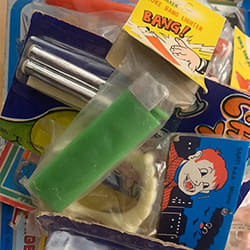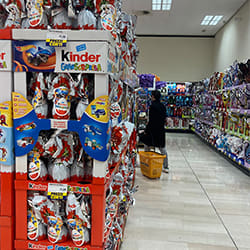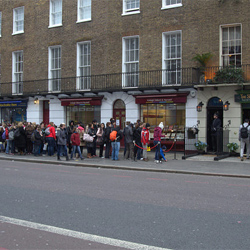This problem is strictly linked to the “supersizing” that is “the super portions” served to Americans and considered among the main culprits of the obesity epidemic affecting the Western world (and, increasingly, also developing countries).
Even though there is a growing interest in nutritional information, it is not always easy to realize that calorie intake, for example, refers to a much smaller portion than the one you are preparing to consume. And so people ingest double or triple doses of calories, fat, sodium, without being aware of it.
Sometimes labels indicate truly ridiculous portions for the food they refer to, and consequently even the amount of sugars, fats or calories seems small, at least at first glance. For example, “10 chips” or “1 cookie”: but who is satisfied with just one cookie or stops eating after five chips? To really know the quantities of nutrients consumed, multiplication is necessary, but the reading is not immediate.
Americans have portions up to 8 times larger than standard ones suggested by nutritionists.
Fast food chains commonly offer supersized burgers, extra large fries and bucket-like drinks. But also other types of restaurants seem to go with ‘the bigger, the better’ policy.
At supermarkets, it is often cheaper to buy 24 battery chicken eggs than 6 grass-fed organic eggs or a gallon of sugary 2% fruit juice rather than a 14 oz organic juice.
At restaurants, the doggy bag is perhaps the simplest and most effective tool to contain or avoid this scandal well rooted in the long catalog of food waste.
The doggy bag (as it shall literally be considered a leftover tray for the dog) is a simple, effective and quick tool to avoid the scandal of food waste in restaurants and cafés. In these places, in fact, up to fifty percent of the food ordered by clients and not consumed is thrown into the garbage. Left on the plates still perfectly edible. In theory the food that is brought home is for the dog, but in practice the majority of the clients who ask for the doggy bag end up eating their leftovers in the following days, such as those that come from the home kitchen.
The doggy bag was introduced in America as early as the 40s. The first cities in the United States to launch this precious anti-food waste tool were Seattle and San Francisco as far as I know. In Seattle, a network of restaurateurs successfully offered clients wax paper bags to take leftover food home.
In San Francisco, however, it was the cafés that launched the practice to give small packages for clients who wanted to take leftovers home for their pets.
Almost no client at a restaurant consumes all the food he orders in America as the portions are very large.
We should all, absolutely everyone, convince ourselves of how useful the doggy bag is and go beyond the ‘shame’ of taking leftovers home.
On the one hand it is a precious tool against waste, but it is also true that all these plastic and Styrofoam containers are creating another type of waste…
It is also true that Americans love buffet formulas and at such restaurants (All you can eat formulas as you pay one flat fee) the doggy bag is not permitted for obvious reasons or one would take a full meal home for another day or someone else…





























































